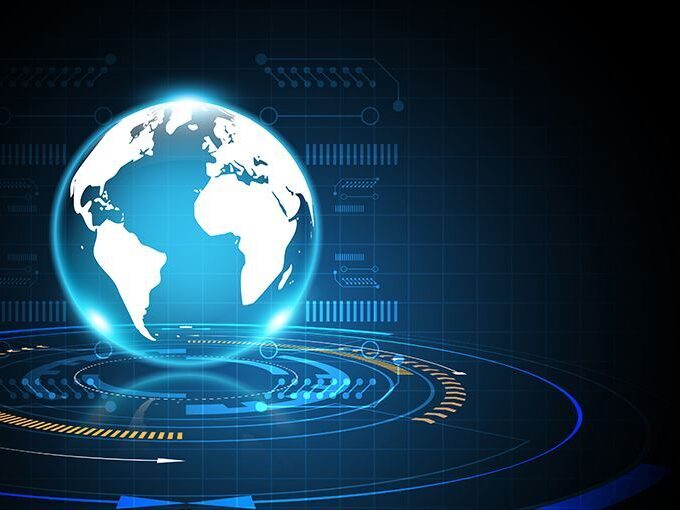Advancements in technology are inevitable, and businesses must be ready and willing to adopt the latest and greatest technology to improve their internal processes. IT is a rapidly evolving field, and it will likely continue to grow as time goes on.
Businesses must hop on the latest trends that emerge to stay ahead of the competition. Many industries, ranging from retail to agriculture, are upgrading their IT systems into their operations and using software to automate redundant tasks, analyze large amounts of information and make data-driven decisions.
IT modernization is a complex, ambiguous topic for the average person. Professionals in the field understand the importance of IT modernization and how it can positively impact a business’s technological ecosystem.
Here are some of the benefits and drawbacks of IT modernization and what the future of business may look like.
What Is IT Modernization?
IT is a broad term that consists of any effort an organization makes to adapt, upgrade or adopt its technology. Many companies need a technological refresh to meet ever-changing customer needs, improve operational efficiency and contribute to employee satisfaction.
Much of IT modernization has to do with transitioning from legacy systems to more innovative, intuitive, and automated ones. It may involve organizations integrating customer data with order fulfillment systems or embracing the new cloud computing technology to make processes more efficient.
It’s essential to remember that every organization is different regarding size, scalability, future growth, budgets, and workforce availability. IT modernization is a broad term that can encompass various technological adaptations depending on a company’s needs.
Recently, the Biden administration requested $9 billion to boost the Technology Modernization Fund (TMF) — in the 2020 fiscal year, the budget was only $25 million. This allocation shows the importance of IT modernization, even on the federal level.
When businesses adequately plan ahead and take their goals into account, IT modernization projects become easily manageable and more successful in the long run.
Organizations that value digitizing their core processes, launching new business initiatives, and applying state-of-the-art technology to their operations will find more success in the future than those that lag in the process.
Also read: How Desktop-as-a-Service (DaaS) is Future of Remote Work
Building Blocks of IT Modernization
Because organizations may require various strategies to achieve their modernization goals, it’s critical to provide examples that many businesses have undertaken to improve their processes.
There are three components to outline that makeup IT modernization:
- Application modernization: Organizations can modernize by adopting a mobile- and cloud-first approach and focusing on liquid applications that will improve efficiency, enhance flexibility, and are easy to maintain as time goes on.
- Infrastructure modernization: Companies can update their existing infrastructure by adopting new technologies to leverage a more flexible, hybrid technological environment.
- Workplace modernization: Businesses must empower employees through collaboration and effective communication. Simply adopting new technologies will not be enough — it’s vital to ensure workers are willing to learn the ins and outs of new systems.
As more businesses become agile in a digital environment, older legacy systems that were once outfitted for specific purposes will become obsolete, thus lowering the organization’s value.
Companies will have to take on IT modernization projects and do their best to overcome any challenges they face if they want to remain competitive.
Types of IT Modernization
Because the concept of IT modernization is all-encompassing, it may be helpful to describe some things businesses can work toward.
Here are some of the various types of modernization most companies will employ:
- Infrastructure
- Datacenter migration
- Networking
- Applications
- Devices
- Life cycle
- Security
- Management
- Training
All these types of modernization essentially outline the different departments of an organization. To be successful, companies need to modernize tech within one department at a time. Trying to update everything at once may prove to be too challenging — during planning, prioritize which areas need an infrastructure refresh the most.
Benefits and Drawbacks of IT Modernization
While IT modernization is a necessary feat business must undertake to stay afloat in a competitive marketplace, they’ll have to face a few challenges along the way, including:
- More critical tasks force modernization to the backburner
- Limited budgets and staff shortages
- Organizations may lack a comprehensive strategy for modernizing
- Companies may feel overburdened by modernization
Some other problems may prevent businesses from fully transforming and modernizing their processes. Slow innovation, being locked into one vendor and increased management burdens are some examples of issues organizations may face when undertaking IT modernization.
Also read: Data Analytics In Digital Transformation: Driving The Change For Organizations
While there are some solutions to these common challenges, it’s essential to recognize that any form of change to standard business practices will come with obstacles.
Business is all about working to overcome these challenges to improve overall performance and increase efficiency. Higher-performing organizations will beat out the competition and see improvements across all areas, from sales to employee satisfaction and beyond.
What IT Modernization Means for Businesses
Although it may seem intimidating at first, there are, thankfully, plenty of online resources and consulting services available to help businesses achieve their modernization goals. Like all transformations, it will take time, effort, and patience to meet upcoming challenges and overcome them. However, the effort is well worth it and will propel companies to success.
Modernization is no longer an option — it’s become a concept borne out of necessity that all organizations would be wise to adopt. Companies that make the transition will survive the ever-changing business environment and come out on top.










Leave a comment